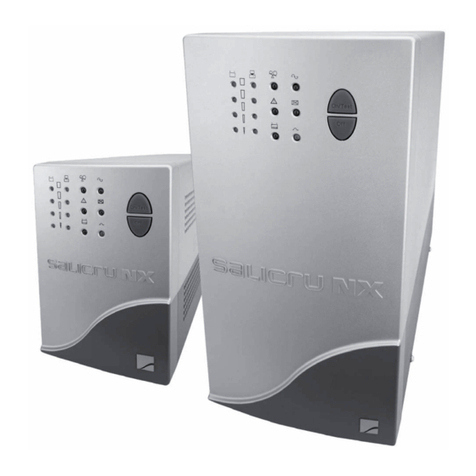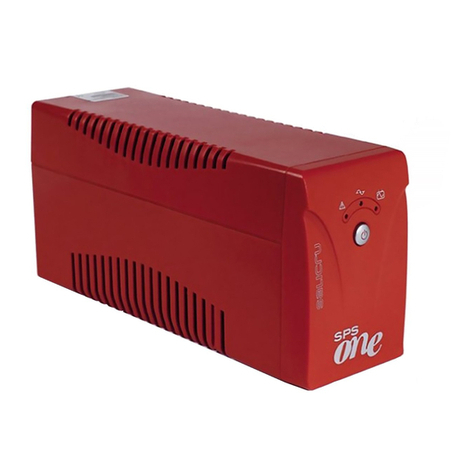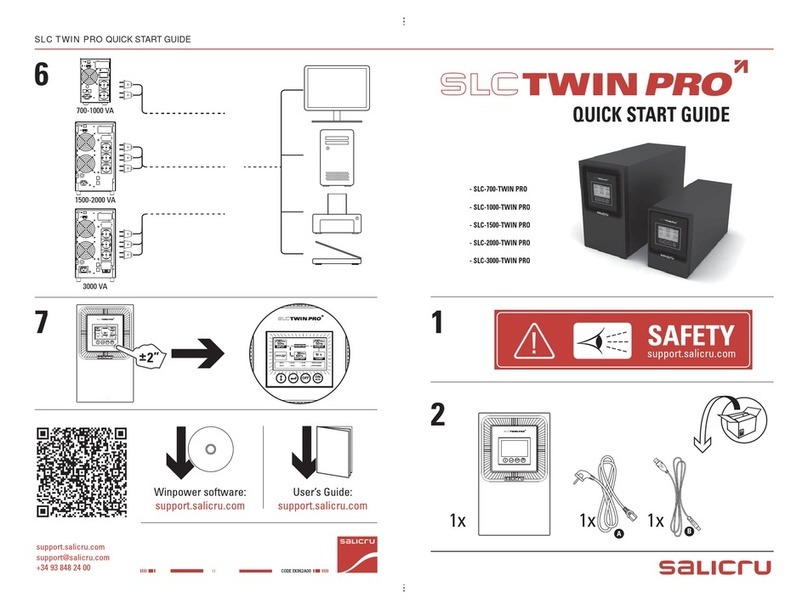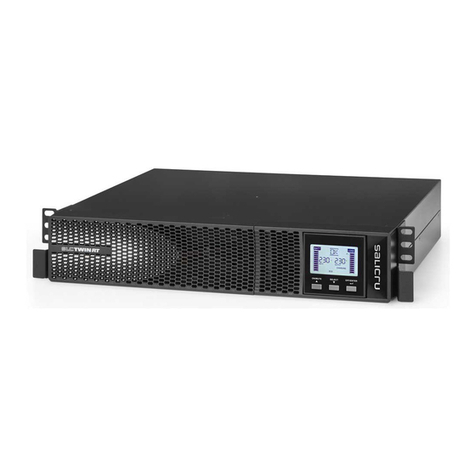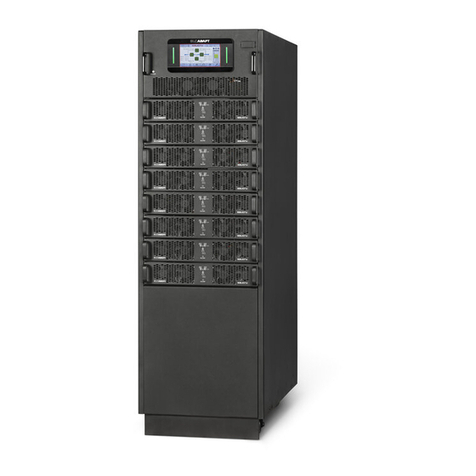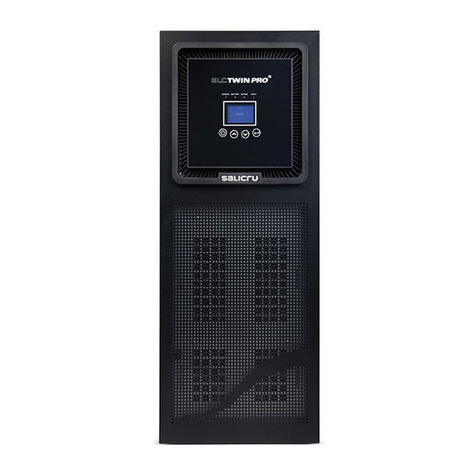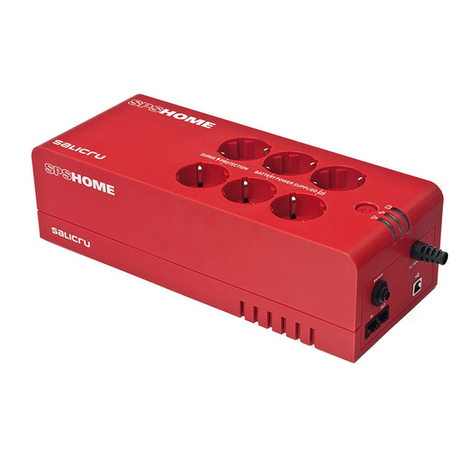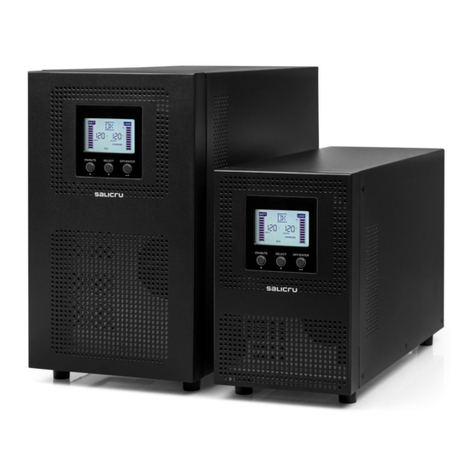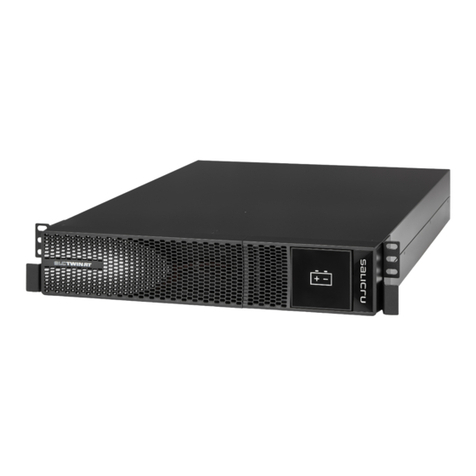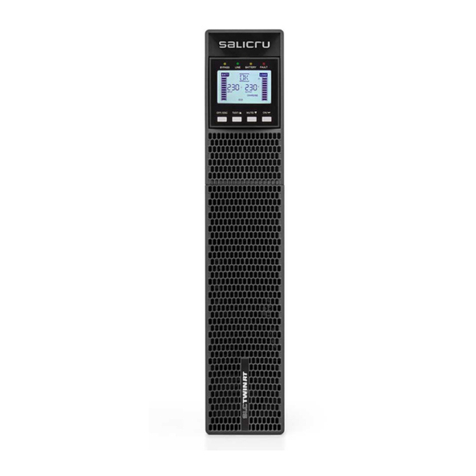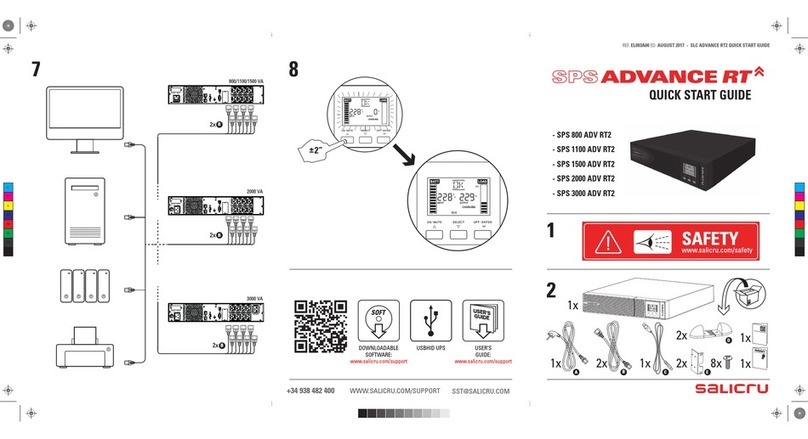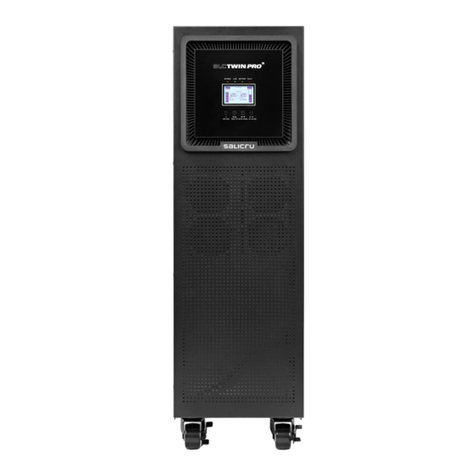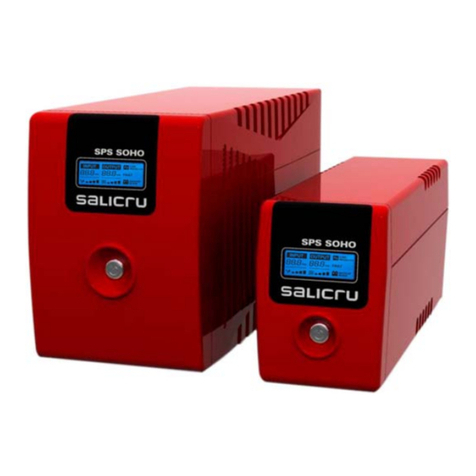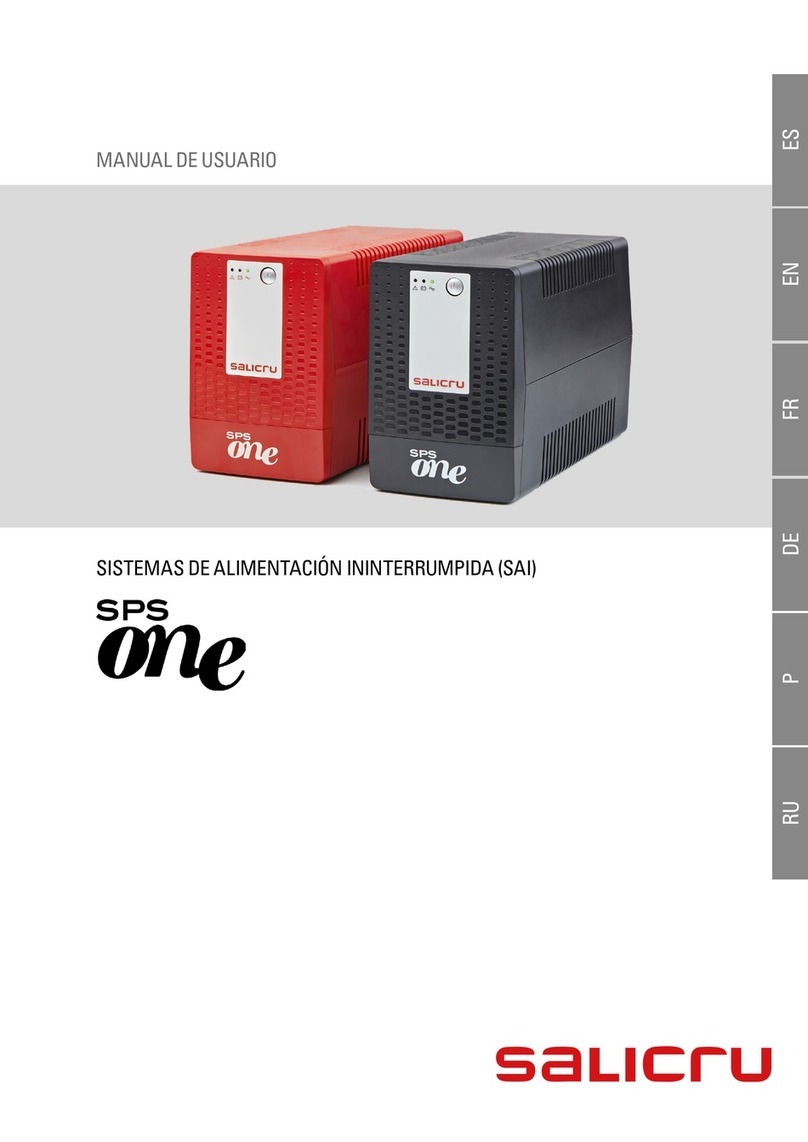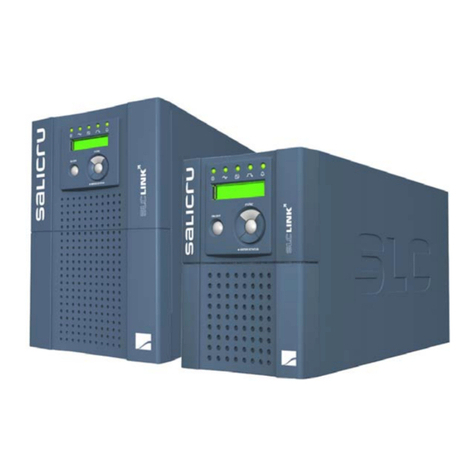6SALICRU
3. QUALITY AND STANDARD GUARANTEE.
3.1. DECLARATION OF THE MANAGEMENT.
Our target is the client’s satisfaction, therefore this Management
has decided to establish a Quality and Environmental policy, by
means of installation a Quality and Environmental Management
System that becomes us capable to comply the requirements de-
manded by the standard ISO 9001 and ISO 14001 and by our Clients
and concerned parts too.
Likewise, the enterprise Management is committed with the devel-
opment and improvement of the Quality and Environmental Man-
agement System, through:
•The communication to all the company about the importance of
satisfaction both in the client’s requirements and in the legal
and regulations.
•The Quality and Environmental Policy diffusion and the fixation
of the Quality and Environment targets.
•To carry out revisions by the Management.
•To provide the needed resources.
3.2. STANDARD.
The SLC TWIN PRO2 product is designed, manufactured and commer-
cialized in accordance with the standard EN ISO 9001 of Quality Man-
agement Systems. The marking shows the conformity to the EEC
Directive by means of the application of the following standards:
•2014/35/EU. - Low Voltage Directive [LVD].
•2014/30/EU. - Electromagnetic Compatibility [EMC].
•2011/65/EU. - Restriction of Hazardous Substances in electrical
and electronic equipment [RoHS).
In accordance with the specifications of the harmonized standards.
Standards as reference:
•EN-IEC 62040-1. Uninterruptible power supply [UPS]. Part 1-1:
General and safety requirements for UPS’s used in accessible
areas by end users..
•EN-IEC 60950-1. IT equipments. Safety. Part 1: General require-
ments.
•EN-IEC 62040-2. Uninterruptible power supply [UPS]. Part 2:
EMC requirements.
The manufacturers responsibility is excluded in the event of any
modification or intervention in the product by the customer’s side.
WARNING!:
SLC TWIN PRO2 0.7.. 3 kVA. This is a category C1 UPS
product.
The use of this equipment is not suitable for life support
applications, where the failure of it can leave out of
service the life support device or could affect to its safety
or efectiveness. Likewise, it is not recommended its use in
those medical applications, commercial transport, nuclear
power stations and other applications or loads, where the
failure of this product can reverse in personal injuries and
material damages.
Declaration of conformity CE of the product is at the client
disposal under previous request to our headquarters offices.
3.2.1. First and second environment.
The following examples of environment cover the majority of UPS
installations.
3.2.1.1. First environment.
Environment that includes residential, commercial and light indus-
trial premises directly connected without intermediate transformers
to a public low-voltage mains supply.
3.2.1.2. Second environment.
Environment that includes all commercial, light industry and indus-
trial establishments other than those directly connected to a low-
voltage mains that supplies buildings used for residential purposes.
3.3. ENVIRONMENT.
This product has been designed to respect the environment and has
been manufactured in accordance with the standard ISO 14001.
Equipment recycling at the end of its useful life:
Our company commits to use the services of authorised societies
and according to the regulations, in order to treat the recovered
product at the end of its useful life (contact your distributor).
Packaging:
To recycle the packaging, follow the legal regulations in force, de-
pending on the particular standard of the country where the equip-
ment is installed.
Batteries:
The batteries mean a serious danger for health and environment.
The disposal of them must be done in accordance with the stand-
ards in force.
